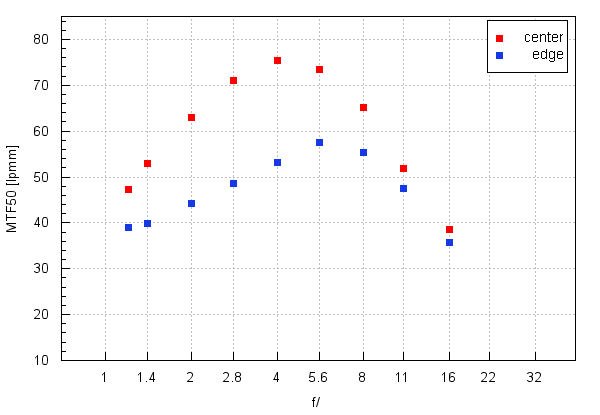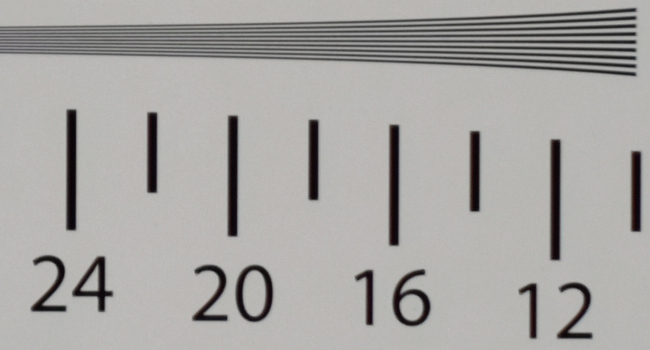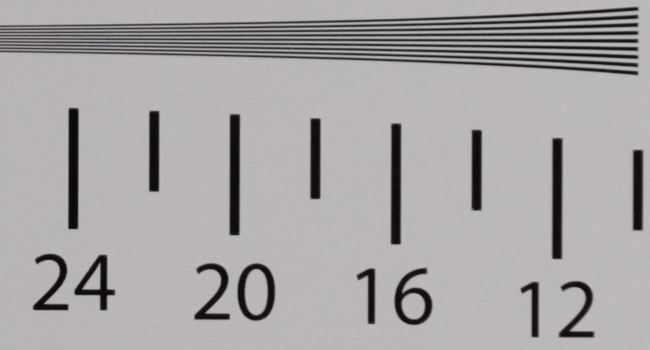Samyang 35 mm f/1.2 ED AS UMC CS
4. Image resolution
Now let’s check how the Samyanga 35 mm f/1.2 ED AS UMC CS compares – an appropriate graph can be found below.

Please Support UsIf you enjoy our reviews and articles, and you want us to continue our work please, support our website by donating through PayPal. The funds are going to be used for paying our editorial team, renting servers, and equipping our testing studio; only that way we will be able to continue providing you interesting content for free. |
- - - - - - - - - - - - - - - - - - - - - - - - - - - - - - - - - - - - - - - - - - - - - - - -
The performance near its maximum relative aperture is, for a very fast lens, one of the most important features. Many instruments of this type have problems with getting at least decent results. Fortunately the Samyang 1.2/35, tested by us right now, is not among them. The image quality by f/1.2–1.4 is perhaps not especially impressive but certainly it can be called decent. With the stopping down of the aperture the resolution improves very quickly and in the f/2.0–2.8 range the images can be already described as very good. The maximum of its possibilities the tested lens reaches by f/4.0 where it is able to exceed 75 lpmm. That value is a bit short of 80 lpmm so it cannot be called outstanding or record-breaking but it remains splendid nevertheless.
We were very curious about the performance on the edge of the frame as the tested lens’s physical dimensions are rather small. In that place laws of physics asserted their rights quite loudly – if something has sensible dimensions, is fast and sharp in the frame centre, unfortunately it has to pay the price on the edge of the frame. In the f/1.2–2.0 range the image quality can hardly be called decent and in order to achieve that level you have to employ apertures from f/2.0 upwards. Of course we wish the Samyang 1.2/35 fared better on the edge of the frame; still you can’t bite off more than you can chew. As you deal here with a handy lens of great aperture fastness which provides very sharp images in the frame centre and costs less than $500, small imperfections on the edge of the frame are completely forgivable. Many more expensive rivals have experienced problems with correction of edges as well.
At the end of this chapter, traditionally, we present crops taken from photo of our resolution testing charts, saved as JPEG files along with RAW files our analysis was based on.
| Fujifilm X-T2, JPEG, f/1.2 |
 |
| Fujifilm X-T2, JPEG, f/4.0 |
 |






